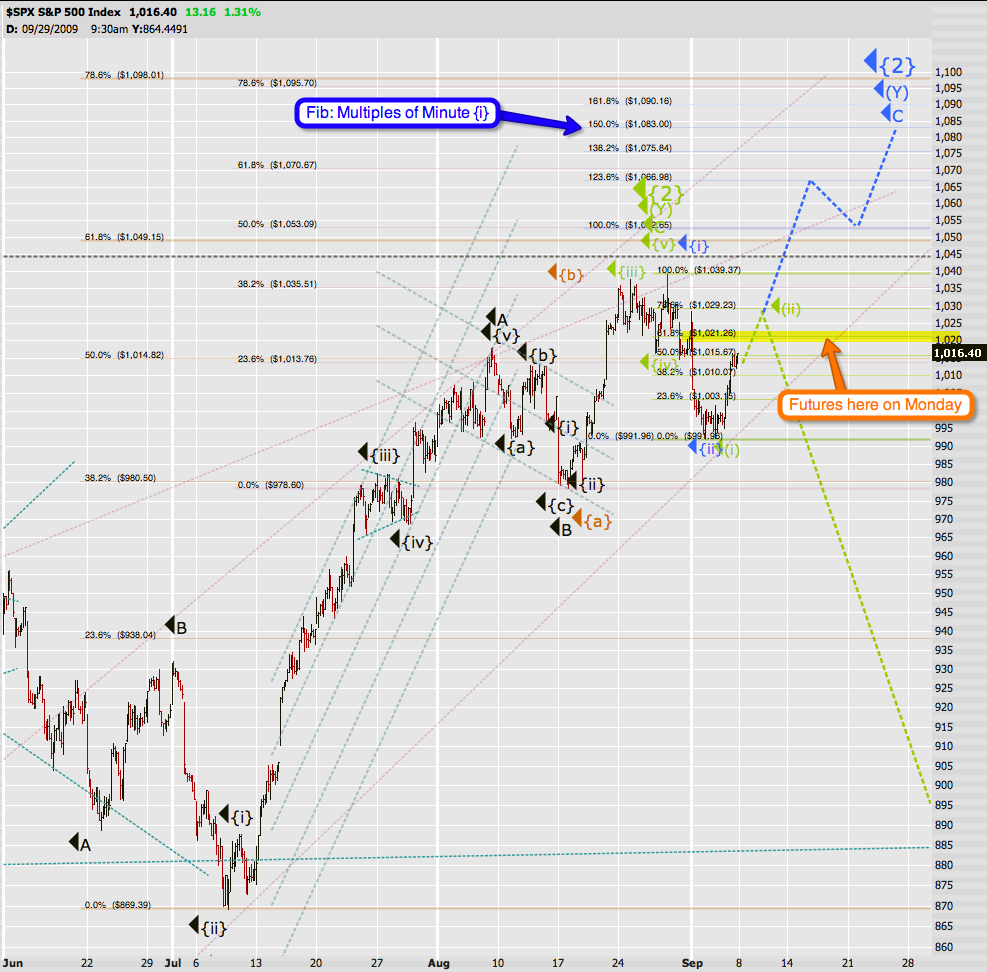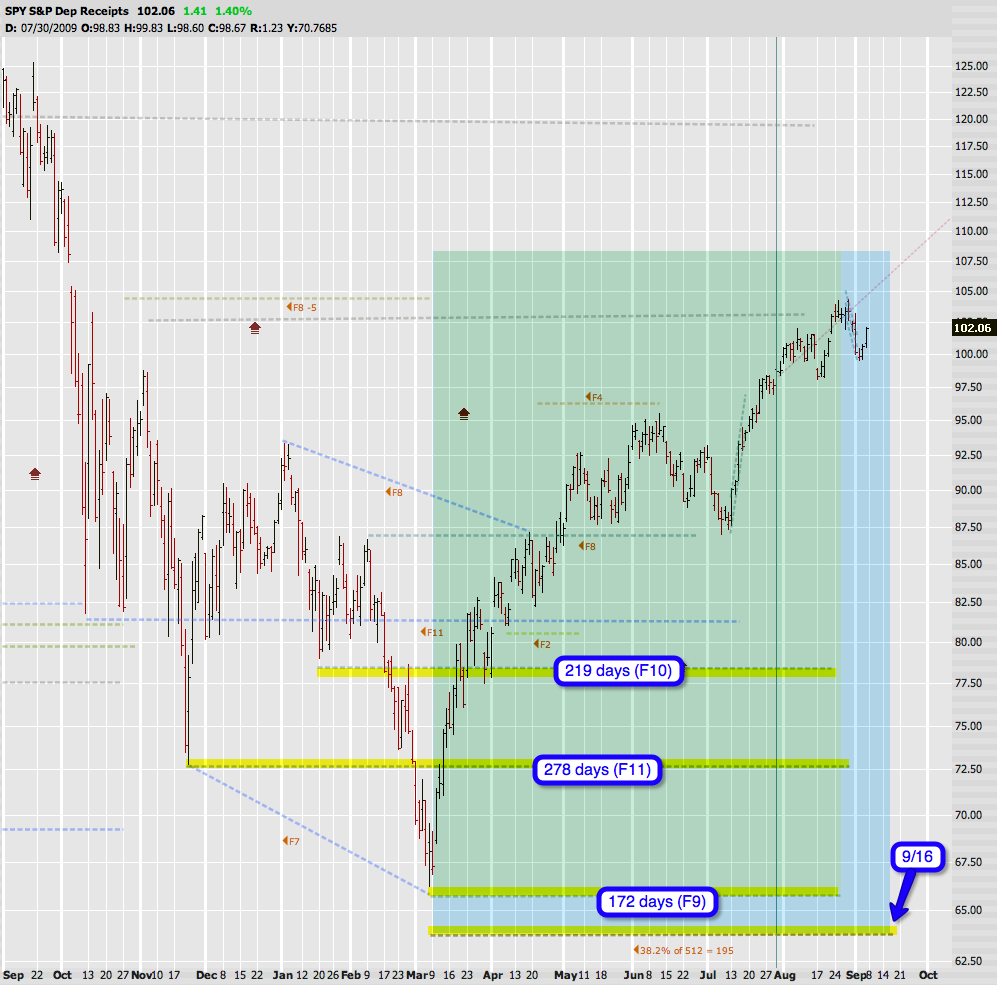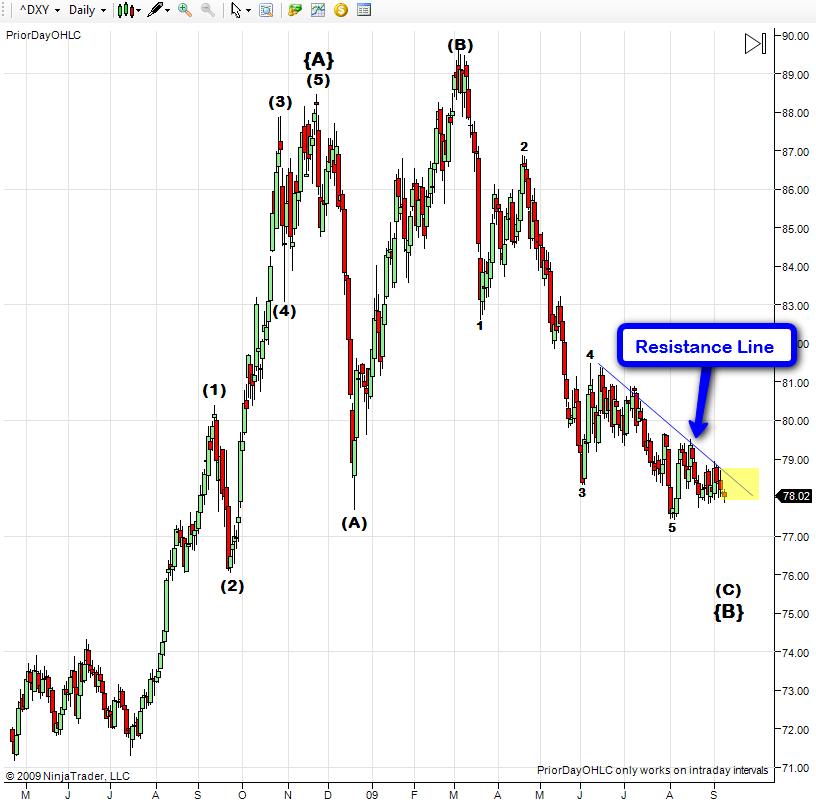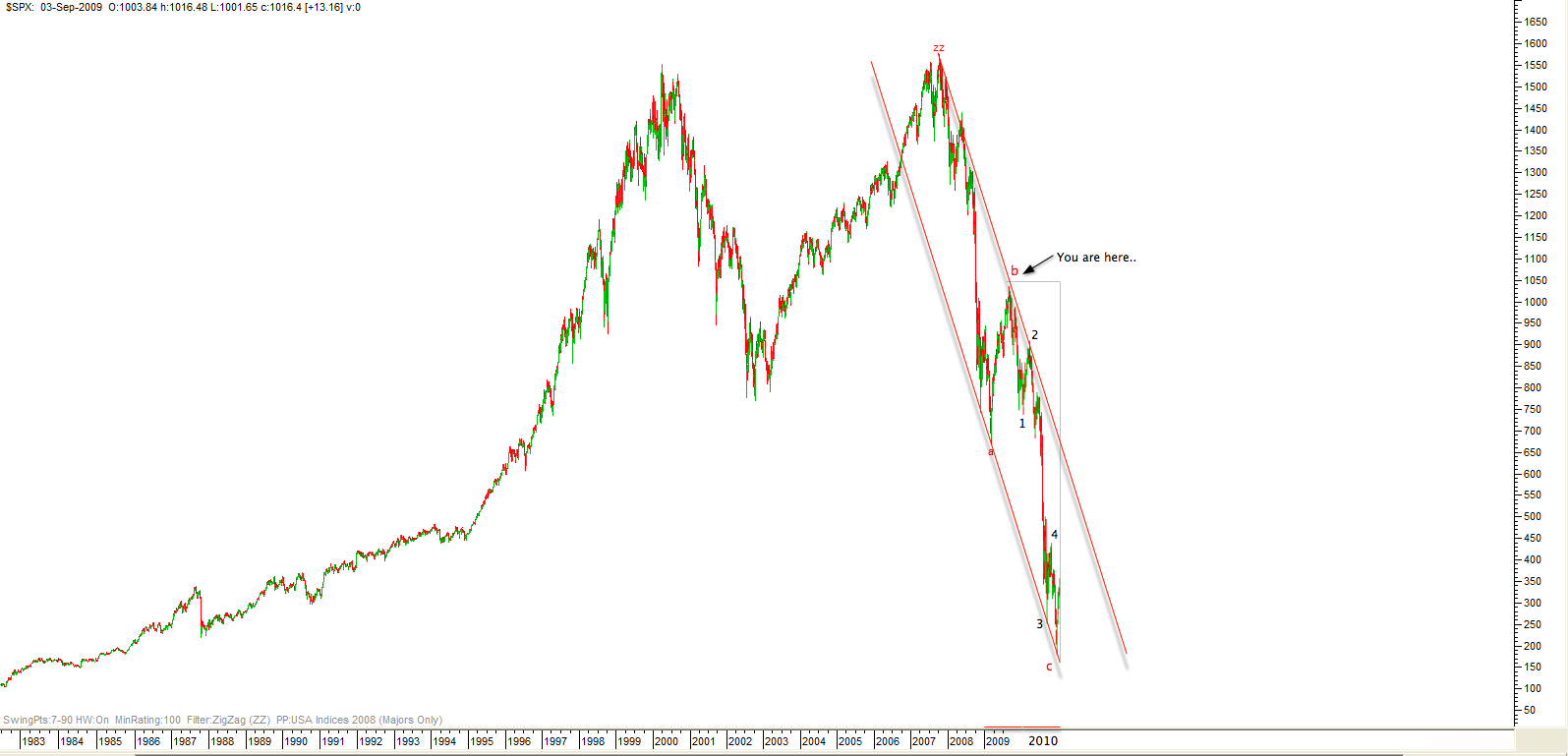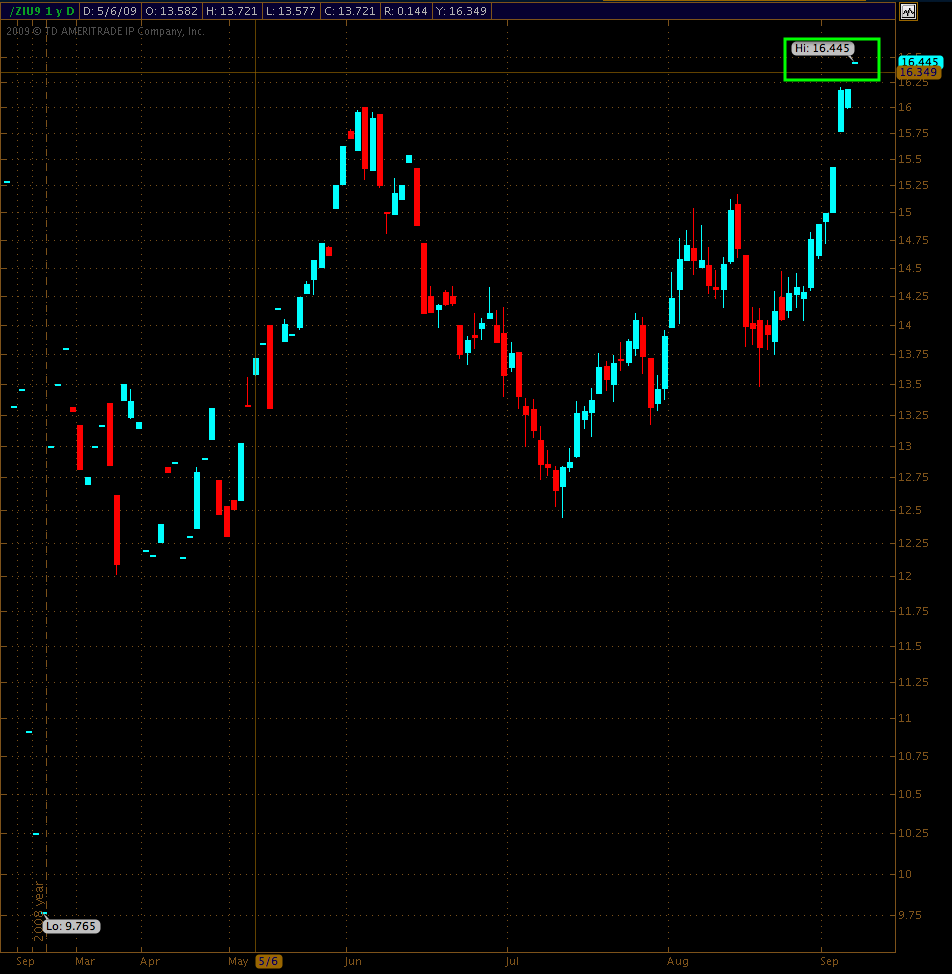Last Bear Standing
Last Bear Standing
Here is something I posted over on the SOH on Saturday – and considering that it’s a traditionally bearish blog I was surprised to receive quite a bit of heat for it:
The very top of a Primary wave will be one of the toughest spots to take short positions. Everyone thinks you are completely nuts and will point at the recent merciless advance and various bear squeezes as obvious evidence. Doubt about the bearish case, dip buying, and bullish complacency will be at record highs and a vast majority of market participants will be convinced that ‘they’ can keep the game going for as long as they wish.
And you will get punished a few times – yes – no avoiding that – none of us have a crystal ball and you will get it wrong a few times. But then, without warning and somewhere out of the blue, there will be that one defining moment – when there’s nobody else left and you truly stand alone ready to embrace death – just when you’re about to concede defeat for the bearish fool you surely are.
Suddenly it will all stop and there will be a moment of complete silence. There will be one more dip and everyone will wait for the dip buyers to swarm in for yet another feast on what remains of the carcass of what used to be the proud bears.
And then the big drop – sudden – brutal – merciless – like a falling sword.
Very few will be able to get in and very few will be able to get out. And in retrospect everyone will keep insisting that it ‘should have been obvious’ that the market was completely irrational and ready to drop at any time. But at that very moment you stood alone against all odds – because that is simply how it works – you can’t make a fortune in the market and do whatever everyone else is doing – you’ve got take it away from everyone else
Some called it poetic while others criticized me as being stubbornly bearish and destined to blow up my account. Having had ample of time to reflect on this over the long Labor Day weekend I keep coming back to the same position: After a 58% continuous rally in merely six months I strangely enough feel very much at peace with my current irrational long term bearish exuberance.

I find it very encouraging that many hobby bears have turned outright bullish at the moment – which is exactly the type of rear mirror view sentiment I have been hoping for as we are nearing the conclusion of this bear market rally.
It’s actually going to be a very brief update this weekend as there is not much to add beyond what I have offered all week. Despite all the mental masturbation and distinctly bullish mindset of most market participants the path ahead is fairly clear – we are topping – either it already happened or will happen around 1070 – 1100.
Soylent Green: As the futures are already clearing the way to the expected spike to 1020 it’s fair to say that this mark will probably the uncle point for this scenario. We need to turn right here or we most likely bust higher and transition into blue. If we turn downwards the count would be Minuette (iii) of Minute (i) of Minor 1 or Intermediate (1) of Primary {3} of Cycle wave c.
Soylent Blue: A.k.a. the ‘Stick It To The Bears One Last Time Scenario’ – we breach 1020 as an extension of a third wave which would be Minute {iii} of Minor C of Intermediate (Y) of Primary {2} of Cycle wave c. We should run quite fast here as retail traders are chasing the tape as to not be ‘left behind’. For this scenario I see 1070 to 1080 minimum. We might even touch 1100 – remember the bulltards love round numbers.
Most market sentiment and momentum indicators are completely useless right now, so I won’t bother posting my usual selection with the exception of one: The Bullish Percent Index (BPI) is a popular market breadth indicator that is calculated by dividing the number of stocks in a given group (an exchange, an industry, etc.) that are currently trading with Point and Figure buy signals, by the total number of stocks in that group (in this case the NYSE). Bullish Percent levels that are above 70% are considered overbought, whereas levels below 30% are considered oversold. Strong buy signals occur when the Bullish Percent Index falls below 30% and then reverses up by at least 6%. Conversely, promising sell signals occur when it goes above 70%, and then reverses down by at least 6%.
The fact that we’ve been continuously over 70% for months now is beside the point – obviously overbought conditions have been able to frustrate but the staunchest of the bears. What’s more interesting on this chart is the fact that bullish sentiment seems to keep climbing higher as fundamentals in the economy as well as the financial markets deteriorate.
Some of you know that I follow Carolan’s Spiral Calendar – his book is out of print but you can still snatch up used copies if you look around. The Spiral Calendar is a set of time units where the numbers of moons are measured in square roots of Fibonacci numbers. One moon cycle is 29.5 days, the time unit of the human reproductive cycle. The table shown above shows F1 through F35 – I usually do not measure beyond F16.
From the book:
The Spiral Calendar is a system of measuring time quite differently from conventional clocks and calendars. Most numerical systems, having defined a base unit, proceed in arithmetic increments of that unit. The Spiral Calendar moves in logarithmic increments. The second number of the sequence is not twice the first and the third is not three times the first, as in arithmetic progression. The human mind naturally prefers arithmetic methods of counting. The conventional analytic approach of time cycles (regularly repeating intervals) reflects this fact. However, it is the logarithmic function that has long been understood as the growth function, intimately connected with the life process. To apply this idea to the dimension of time reveals the patterns of life produced by the logarithmic building blocks of the Spiral Calendar.
I wish I could be so eloquent explaining arithmetic progression of numerical units – damn that Carolan! Now, the book has been out of print for years and I’m not even sure if Carolan himself is still using this very method. However, as I myself started to connect some lines the gyrations of the past two years seemed to follow the projected time cycles quite nicely – observe:
My chart actually goes back further than that and I am only showing the past year. Based on my current projections we almost exactly hit F9, F10, and F11 on August 28, the current peak. Carolan himself once told me that lining up bottoms and/or peaks does not automatically mean that a major top or bottom is in place. But what I am also looking at is the September 16 date, which would mark the 195th day after we painted the 666.79 low on March 9th. What is the meaning of that particular number? Well, the entire drop from the October 11, 2007 high to the March 9th, 2008 low took exactly 512 days – 195 is 38.2% of that – which as you know is a Fibonnaci interval we commonly use in charting – and I often use it for my (admittedly speculative) time projections as well.
BTW, where do those Fib numbers come from in the first place? Have you ever asked yourself why technicians use fibs and why they often line up perfectly with the market’s gyrations? Because they are truly ubiquitous and – believe it or not – are even an integral part of nature. The Fibonacci Sequence is quite simple. You start with zero and one as the first two terms (because you’ve got to start somewhere). After that, every term is the sum of the previous two terms (i.e. 0 + 1 = 1, 1 + 1 = 2, 1 + 2 = 3, 2 + 3 = 5, 3 + 5 = 8, etc.), so we get 0, 1, 1, 2, 3, 5, 8, 13, 21, 34, 55, 89, 144, 233, 377, 610, and so on (there is no upper bound). That’s it! So what’s so special about these numbers?
Quite a lot, as it turns out. Fibonacci numbers show up all over the place – in nature (flowers, nautilus shells, etc.), geometry, music, and mathematics, to name a few. Let’s look at some of the mathematical properties of Fibonacci numbers. If, starting past 1, you divide each Fibonacci number by its predecessor, you’ll get a sequence of numbers that converges on 1.6180339887… (the ellipsis indicates that this is an irrational number, where the digits go on forever. In the interest of keeping this short, I’ll stop after ten decimal places ). What happens if you divide each Fibonacci number by its successor? You get a sequence of numbers that converges on 0.6180339887… (that’s right, everything to the right of the decimal point is identical to the other number). Wooo, spooky. That also means that if you invert 1.6180339887… (i.e. divide one by that number), you get 0.6180339887…, and inverting that, you get 1.6180339887… again. It turns out that 1.618 (from now on, we’ll just three decimal places) is known as the “divine proportion” or the “golden ratio,” is usually denoted by the Greek letter phi (?), and it turns up all over the place.
So, that’s were the fib 0.618 comes from. The other fibs 0.382 and 0.5 commonly used in technical analysis have a less impressive background, but are just as powerful:
0.382=(1-.618)=(0.618*0.618)
and 0.5 is the mean of the two numbers.
Other neat fib facts (0.618*(1+0.618)=1 and (0.382*(1+.618))=0.618.
Yes, I can do this all day and maybe it’s all ust Mole’s Mental Masturbation (MMM – trademark pending). But the message to take home is that Soylent Blue – should it unfold as many of you already expect today – will most likely progress fairly quickly and might just complete around the September 16 mark. It would fit very well with my current view of the SPX universe. Maybe a few days earlier or maybe a few days later – price is always the ultimate measure in Elliott Wave Theory.
We all know that the Dollar needs to remain above its prior low at 77.43 – and unless it can breach its current resistance line (shown on the chart above) I’m afraid a new low is imminent which would be the catalyst for Soylent Blue in equities.
And that’s pretty much all I have for today – see you on the other side.
7:20pm EDT: Keirsten sent me this article a few minutes after I posted this. For the record: I do not believe in Astrology but thought some of you might enjoy this.
BTW, we are running out of hot trader babes on this blog. Fujisan has moved on (no, I won’t comment on that train wreck), Annamall is spending a lot of her time on the Slope these days, and Keirsten will be pretty much MIA this week due to personal reasons. We need a new delivery in the fresh meat isle:
Yup – that’s along the lines of what I’m looking for – with a trading background in options and futures of course. Hey, shouldn’t be too hard to find, right?
9:09pm EDT: Zigzag just posted this fractal projection in the comments section:
I think that one lines up nicely with the crash chart I posted two weeks ago.
12:00am EDT: Silver is flying right now:
At least I didn’t short this bitch last week…
Cheers,
Mole









